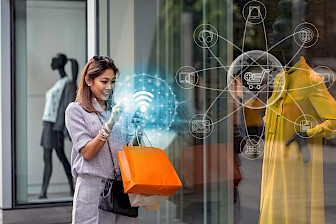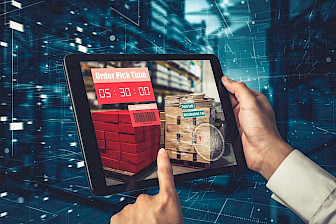How to improve CX with Proximity Marketing

Marketers are now uniquely positioned to deliver a completely new and truly enhanced customer experience made possible by beacon-driven proximity marketing.

The consumer of today is a superhuman compared to the consumer of a decade ago.
Digitally empowered and highly informed, modern consumers have unlimited real-time access to more precise, objective, and expert reviews of almost any product or service they’re interested in purchasing. For brands, this shift in power leaves no room for marketing ambiguity or hyperbole; the persuasion and positioning tactics of the past simply won’t work anymore.
Additionally, the digital era has led to a proliferation of media messages, with the average person being exposed to anywhere between 3,000 and 20,000 messages a day. Is it any surprise that, while empowered, consumers are also confused and overwhelmed by all this information?
Psychologist Barry Schwartz refers to this state of confusion as the “paradox of choice.” While seemingly a good thing to have more to select from, today’s shoppers are actually overloaded with a barrage of very similar product choices. The results are often decision paralysis, abandoned online shopping carts, showrooming, or buyer’s remorse—and all of these trends present new challenges for marketing leaders.
How, then, can marketers leverage today’s digital technologies in a way that’s actually helpful to consumers while still delivering the results their brands are looking for?
Enter: Proximity Marketing Powered By Beacon Technology
A beacon is a small, energy-efficient hardware device that leverages Bluetooth low energy technology to communicate with an app running on a customer’s mobile device. Using beacons to deliver proximity-based marketing, while relatively new, is a promising and innovative way for brands to cut through the clutter and bring value to customers in a one-to-one manner.
Beacon technology enables a hypercontextual way to market: It exploits the physical location of a product with respect to the consumer’s location and uses technology to bridge the gap between the physical and digital worlds. By embracing this tactic, companies (metaphorically speaking) are able to walk alongside consumers as they shop, delivering personalized messages to their mobile devices regarding products, services, or offerings that may be of interest to them. Imagine, for example, that a customer has just entered the dairy aisle of a beacon-enabled supermarket. With this technology, the store can instantly send a coupon for milk as he or she enters the vicinity of the product category. The context is right, the coupon is relevant, and, therefore, the overall customer experience is a positive one.
Proximity marketing may sound a little intrusive, but 53% of consumers say they’re willing to share their location in exchange for relevant offers, ads, and information, and 57% are more likely to engage with advertising if it’s location-based. That’s because beacon-driven proximity marketing via mobile is relatively nonintrusive. Consumers must proactively “opt in” to receive information or notifications on their devices.
Further, beacon-powered apps allow marketers to collect valuable data on consumers’ in-location activity. By applying real-time analytics to a user’s behavior within the store, marketers can begin to really understand purchasing patterns and uncover insights that reveal customers’ buying preferences. Then they can adjust their marketing spending and strategies accordingly.
But beacons also go far beyond the retail environment to offer new and exciting ways to improve the overall customer experience. For example, they can be used to facilitate indoor navigation, helping people maneuver through unfamiliar or complex buildings turn by turn, such as airports, museums, hospitals, shopping malls, or trade shows. Think along the lines of Google Maps for the indoors; the app on a user’s smartphone detects the signal from nearby beacons to become aware of a user’s location in relation to it, along with arrival, departure, and linger times.
While proximity marketing using mobile and beacon technology can provide countless new opportunities for brands, here are three particular scenarios marketers should consider that will take their customer experience to the next level:
- Build brand loyalty through personalization: When customers walk into your store, greet them by name and use their past purchasing habits to recommend products (along with offers) they might be interested in this time around. Marketers can view visual heat map data of each individual user’s typical path; store managers can then use this information to optimize merchandising and product placement throughout the store, making customers’ lives that much easier.
- Provide an exceptional end-to-end customer experience: Imagine your customer is a tourist who’s visiting your resort for the first time. With proximity marketing, you could create a seamless experience from arrival to departure: Allow him to check in using his phone, provide keyless entry into the hotel room, guide him to points of interest, tell him when a storm is coming so he can plan his beach time accordingly, and suggest alternate activities nearby that you know he’ll enjoy. Imagine how much more relaxing and fun this will make your customer’s hard-earned vacation.
- Reward customers with premium services: Beacons and proximity marketing can add a whole new element to the white-glove treatment brands provide to their top-tier customers. Banks, for example, can leverage the technology to inform their staffs when a high-value individual enters the branch, ensuring the red carpet is rolled out before he or she even reaches the teller window. Further, if wait times are long, the bank could use beacons to guide their VIPs to a specific service line—or put their names at the top of the waiting list.
Being a consumer today can get exhausting. With so many messages and options being hurled at them from all angles, they deserve a break from all the noise.
Marketers are now uniquely positioned to deliver a completely new and truly enhanced customer experience made possible by beacon-driven proximity marketing. Take a journey with customers, understand their pain points and desires, and position your brand to provide them with what matters most—when and where they need it.






